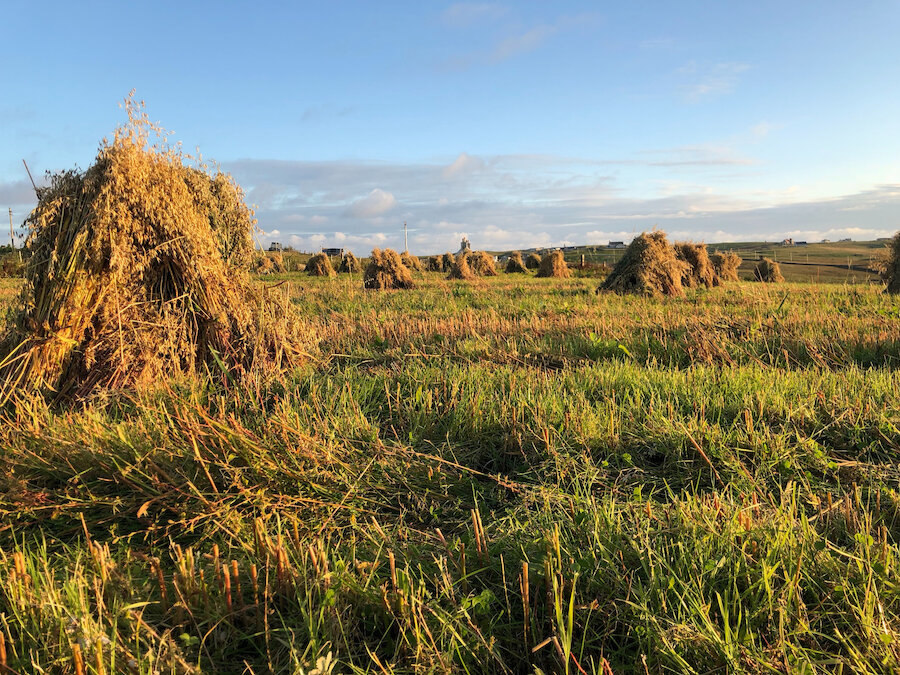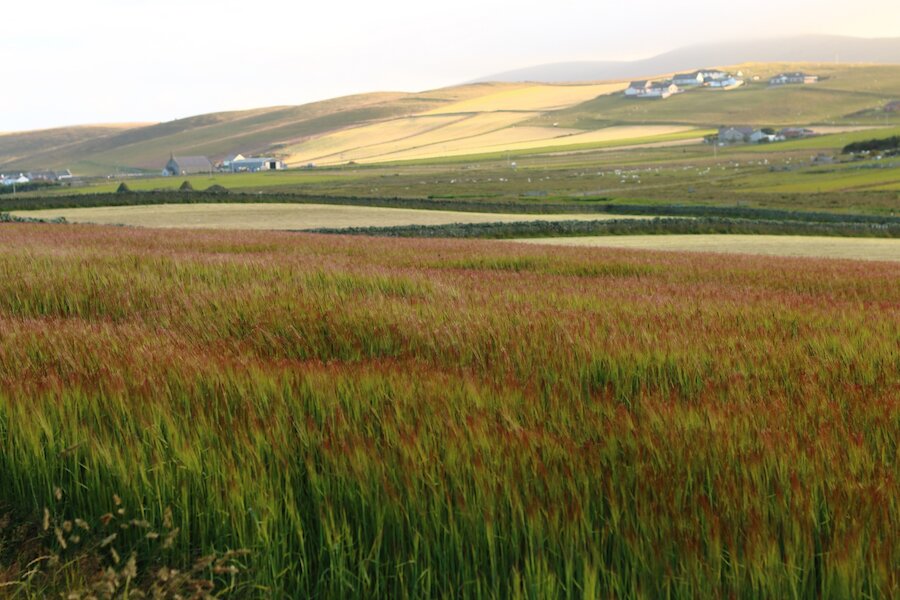We have seen the first of the storms pass through in recent weeks – a sure sign that the seasons are changing and we are heading into hairst. Strong gales always seem to accompany the equinox – whether this is just weather lore, bad luck, or hard science is anyone’s guess, but the storms are impressive to watch nonetheless and can cause some travel disruption to our ferries.
The nights are also starting to ‘draa in’ [draw in], and the long nights of summer feel like a distant memory; summer is slipping away, sinking beneath the horizon and taking the sun with it. Where we would opt-outside in simmer, come hairst we’re ready to cosy up on the couch in the evening, light a few candles, and read a good book.
Autumn in Shetland is not punctuated by the rich browns, reds and yellows of the mainland; we lack the trees to give that final flush of colour and the crispness of fallen leaves underfoot. Instead, the colours fade and mute from their summer vibrancy as the sea-spray and wind roll in off the North Atlantic. That said, the colours in the sea as they are kicked up into a foaming fury by an Atlantic swell bring a special magic, and there is nothing more invigorating than those long, deep breaths of fresh air as you stand in that special, liminal zone between the land and the sea.
In the past, hairst – like voar – was a busy time; a time of hard labour and backs bent to the earth, of watching the weather and picking the right moment to bring in the hay, lift the tatties and secure the boats in the noosts for winter. The timing was everything, and one wrong decision could spell disaster for crops as the weather closed in.



